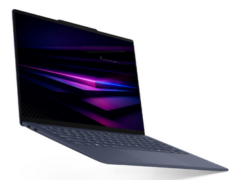- Home
- Mobiles
- Mobiles Reviews
- Samsung Galaxy A7 (2017) and Galaxy A5 (2017) Review
Samsung Galaxy A7 (2017) and Galaxy A5 (2017) Review

Samsung’s Galaxy A series is positioned as the next best thing to the flagship Galaxy S series. The idea here is to provide an almost top-level experience, which encompasses the feel of the device, features, and of course performance, but at a price that more people can stomach. So far, the company has done a good job of maintaining this balance, and now, it’s time to take the 2017 editions of the Galaxy A7 and Galaxy A5 for a spin.
These new smartphones went on sale in India back in March, and based on our initial encounter with them, they seemed like they could be serious contenders in the mid-range smartphone space. Priced at Rs. 30,900 and Rs. 26,900 for the Galaxy A7 (2017) and the Galaxy A5 (2017) respectively, the two go up against the Moto Z2 Play (Review), OnePlus 5 (Review), Honor 8 Pro (Review) and Samsung's own Galaxy C7 Pro (Review). Let's see how they stack up.
Samsung Galaxy A7 (2017) and Galaxy A5 (2017) design
The two new smartphones are virtually identical in terms of design and features. For the extra Rs. 4,000 for the Galaxy A7 (2017), you get a bigger display and a larger battery. For the sake of simplicity, all our analysis in this review applies to both model, unless stated otherwise.
Samsung has done an excellent job with the build quality as the metal and glass blend seamlessly together, which feels really good when you hold either of the two. The aluminium frame on the sides isn’t slippery, and adds a rich finish to the phones, just like with last year's models. Both models have edge-curved Gorilla Glass 4 along with glass on the back. The edges of the back are curved inwards, much like the design on the Samsung Galaxy S7. However, the backs of the phones look too bland, and one could easily mistake these for budget-level phones from this angle.
There are volume buttons to the left and a power button to the right. The phones' mono loudspeakers have been shifted to the right side, above the power buttons. This is a bit of an odd place to put them, but the advantage is that the speakers aren't blocked even when you’re holding these phones in landscape mode for gaming or watching videos.
There are visible antenna bands at the top and bottom of the phones, and the USB Type-C ports and headphone sockets are at the bottom. Like before, both phones have dedicated slots for a microSD card (up to 256GB) along with two Nano-SIM slots, which we appreciate. One big flagship-class feature that is new is IP68 water and dust resistance.
The big differences between the two, physically, are their size and weight. The Galaxy A5 (2017) is a lot more manageable for one-handed use with its 5.2-inch screen, and isn’t too heavy at 157 grams. The Galaxy A7 (2017) on the other hand feels bulky and heavy at 186 grams and isn't the best suited for one-handed use with its larger 5.7-inch screen.
![]()
Both models have Super AMOLED displays and both have the same 1080x1920 pixel resolution. This makes edges and text in the OS appear slightly less sharp on the Galaxy A7 compared to the Galaxy A5. We also found that our Galaxy A5 (2017) review unit had slightly crisper whites and punchier colours compared to the Galaxy A7 (2017) sample, which exhibited paler whites and slightly muted colours.
We have a physical home button below the displays on both phones, with two capacitive buttons on either side. The fingerprint sensors are fast at authentication and we like that you don’t have to press the button to unlock the phone, as they work with just a touch.
In each phone's box, you get a stereo headset, travel adapter, charging cable, and user guide. Overall, the new Galaxy A7 and Galaxy A5 stay true to their premium identities. The A5 is definitely more manageable in your hand, so the choice can come down to a tradeoff between screen size and ease of use.
Samsung Galaxy A7 (2017) and Galaxy A5 (2017) specifications and features
Samsung has fitted both smartphones with pretty much the same internals. Processing is handled by an Exynos 7880 octa-core SoC and 3GB of RAM. This SoC is a nice upgrade from the Exynos 7580 in last year's A-series models, with a smaller 14nm fabrication process and faster Mali-T830 GPU. It uses ARM’s big.LITTLE CPU architecture to bring together four Cortex-A72 cores and four Cortex-A53 cores.
Compared to a Qualcomm's equivalent Snapdragon 626 which is used in phones such as the Moto Z2 Play, the Exynos 7880 seems to have a better GPU, but CPU performance seem comparatively weaker. We got a score of 33fps in GFXbench, while other benchmarks that measure overall performance were a bit of a mixed bag with AnTuTu and PCMark favouring the Qualcomm chip while Quadrant went in the Exynos’ favour.
The rest of the specifications include 32GB of storage, dual-band Wi-Fi 802.11ac, Bluetooth 4.2, NFC and MST for Samsung Pay, GPS, FM radio, USB-OTG, and a suite of sensors which include a gyroscope, barometer, and hall sensor, plus the usual ones.
In terms of software, both smartphones are still on a custom version of Android 6.0.1 Marshmallow. However, this is only temporary as Samsung appears to have completed its Wi-Fi certification process for an upcoming update, which clearly shows the version as Android 7. The look and feel of the interface in general is very similar to that of the Galaxy S7 series and the more recent Galaxy C9 Pro and Galaxy C7 Pro.
![]()
You can enable the ‘Always On’ display feature which is very handy if you want a constant overview of your unread notifications. You get Google's apps as well as Microsoft’s Office suite and Samsung’s own apps such as My Galaxy, USB Backup, and S Secure. Samsung offers you a choice of whether or not to install its own apps first setup the phone, so you aren’t forced to live with redundant apps. You can always download them later from Galaxy Apps store.
There are also a tonne of little features added to the Settings app like Smart Network Switch, which automatically switches between mobile data and Wi-Fi depending the strength of each; a blue light filter in the display settings; an SOS trigger called Panic mode; and Game Launcher for in-game screen captures and recording. Samsung’s Secure Folder feature lets you use both phones' fingerprint sensors to lock apps, accounts, files, notes, and even contacts. You also get 15GB of Samsung Cloud storage for backing up contacts, notes, browser data, and the gallery.
The UI has a notifications toggle called S Bike mode, which has been a popular feature in the company’s Galaxy J series lineup. Once activated, a big S Bike button takes over the entire screen, preventing you from using the phone. Caller get a voice message which tells them that the phone's owner is riding a bike, and if it’s an urgent call, they can press ‘1’ on their diallers to force the call through.
Samsung Pay is another very useful addition to both phones and it works very well. We tried this out and save for a few restaurants, it worked in most places.
![]()
Samsung Galaxy A7 (2017) and Galaxy A5 (2017) performance, cameras, and battery life
App and interface performance is very good on both smartphones. Despite the heavy UI customisations, we rarely encountered hiccups with animations or multitasking. However, gaming performance isn’t the best. While games like Implosion and Marvel Spider-Man Unlimited run smoothly, heavier games like Breakneck and Asphalt 8 had intermittent choppy frame rates. The good news is that the phones don't get excessively hot during prolonged gaming sessions. 4G works well and VoLTE is also supported. Both phones also survived exposure to rain without any problems.
We’ve rarely had complaints about the media capabilities of Samsung's smartphones, and that stays true with these units. The stock video player can handle 4K playback, and you can do other fun stuff too like create six-second GIFs from any portion of a video. Picture-in-picture mode is supported, and you have the ability to edit videos (although this didn’t work on our 4K test clips). The loudspeakers are quite weak for media files and some games, but they're okay for alerts.
Both smartphones have the exact same cameras. At the back, the Samsung Galaxy A7 (2017) and Galaxy A5 (2017) have 16-megapixel sensors with an f/1.9 aperture, and in the front there are also 16-megapixel fixed-focus cameras with the same aperture. For stills in daylight, both phones take a good second to lock focus. If you happen to move even slightly, you can see the focus readjusting. During our tests, we found it nearly impossible to get a properly focused shot of moving subjects such as pets.
Landscapes appeared flat with no depth, and close-ups were tricky too. We struggled with macro shots, and more often than not, we ended up with soft focus or blurry shots because either we or our subjects moved a bit. The level of detail is shots was pretty average too, and our sample photos ended up looking a bit underexposed. The sensor used here is a Samsung S5K3P8, which frankly just doesn’t cut it at this price point.
![]()
![]() Tap to see full-sized Samsung Galaxy A7 (2017) sample images
Tap to see full-sized Samsung Galaxy A7 (2017) sample images
In low light, the large aperture does a good job at keeping noise under control, as you end up with bright and well lit images if there's decent ambient light. However, this also subdues most of the detail in shots. The front cameras have the same resolution but selfies aren’t sharp and lack detail.
The camera app is easy to use but isn’t the most practical. For starters, there’s no Auto HDR mode, which is now common in most camera apps. To get to HDR, you need to swipe right to pull up the camera modes and then select it, which isn't convenient. Pro mode is poorly implemented too, as you can only select a maximum sensitivity of ISO 800 and there’s no shutter speed control, which makes it useless in low light.
![]()
![]() Tap to see full-sized Samsung Galaxy A5 (2017) sample images
Tap to see full-sized Samsung Galaxy A5 (2017) sample images
Video recording maxes out at 1080p, which is not very good considering 4K video recording is doable on mainstream phones these days. Autofocus works quite well in video mode and is relatively good at shifting focus between subjects. There’s no stabilisation here, so you will want to restrict your movements when shooting. Other than Hyperlapse video mode, there are no effects or slow motion modes to choose from. You have the option to download more shooting modes but there are literally just two of them to download.
The Samsung Galaxy A7 (2017) features a 3600mAh battery while the A5 (2017) has a 3000mAh battery. In our HD video loop test, we managed to get good runtimes on both phones, with the A5 stretching to 16 hours, 21 minutes and the A7 going up to 17 hours, 14 minutes. We managed to get a full day’s worth of usage from the A5, with A7 giving us up to a day and half. Both phones support Samsung’s Adaptive Charging and in our tests, we managed to get up to about 80 percent in little more than an hour.
![]()
Samsung Galaxy A7 (2017) and Galaxy A5 (2017) in pictures
Verdict
Samsung’s latest A-series offerings hit the right notes when it comes to build quality and design. The Galaxy A7 (2017) and Galaxy A5 (2017) look and feel incredibly premium, just like their predecessors. We’re not big fans of the look of the backs, but then that’s just us nitpicking.
Between the two, the Samsung Galaxy A5 (2017) is the one we’d recommend. Camera performance is a bit weak and some high-end games don’t have smooth framerates, but in return, you get good battery life, a vivid display and handy features like S Bike mode and Samsung Pay. The price feels a bit on the higher side considering overall performance, but the IP68 certification is appealing.
On the other hand, we don’t seen any worthwhile reason to pick up the Galaxy A7 (2017) at Rs. 30,900 as you aren’t getting anything more for this premium other than a slightly larger battery and a bigger screen. These also come at the cost of ergonomics, as the A7 is heavier and bulkier. Here, you’re better off with the Honor 8 Pro or the OnePlus 5.
Catch the latest from the Consumer Electronics Show on Gadgets 360, at our CES 2026 hub.
- Samsung Galaxy Unpacked 2025
- ChatGPT
- Redmi Note 14 Pro+
- iPhone 16
- Apple Vision Pro
- Oneplus 12
- OnePlus Nord CE 3 Lite 5G
- iPhone 13
- Xiaomi 14 Pro
- Oppo Find N3
- Tecno Spark Go (2023)
- Realme V30
- Best Phones Under 25000
- Samsung Galaxy S24 Series
- Cryptocurrency
- iQoo 12
- Samsung Galaxy S24 Ultra
- Giottus
- Samsung Galaxy Z Flip 5
- Apple 'Scary Fast'
- Housefull 5
- GoPro Hero 12 Black Review
- Invincible Season 2
- JioGlass
- HD Ready TV
- Laptop Under 50000
- Smartwatch Under 10000
- Latest Mobile Phones
- Compare Phones
- Motorola Signature
- Vivo Y50e 5G
- Vivo Y50s 5G
- Realme 16 Pro+ 5G
- Realme 16 Pro 5G
- TCL Nxtpaper 70 Pro
- OPPO A6 Pro 5G
- Honor Power 2
- Lenovo Yoga Slim 7x (2025)
- Lenovo Yoga Slim 7a
- Realme Pad 3
- OPPO Pad Air 5
- Xiaomi Watch 5
- Huawei Watch 10th Anniversary Edition
- Acerpure Nitro Z Series 100-inch QLED TV
- Samsung 43 Inch LED Ultra HD (4K) Smart TV (UA43UE81AFULXL)
- Asus ROG Ally
- Nintendo Switch Lite
- Haier 1.6 Ton 5 Star Inverter Split AC (HSU19G-MZAID5BN-INV)
- Haier 1.6 Ton 5 Star Inverter Split AC (HSU19G-MZAIM5BN-INV)














